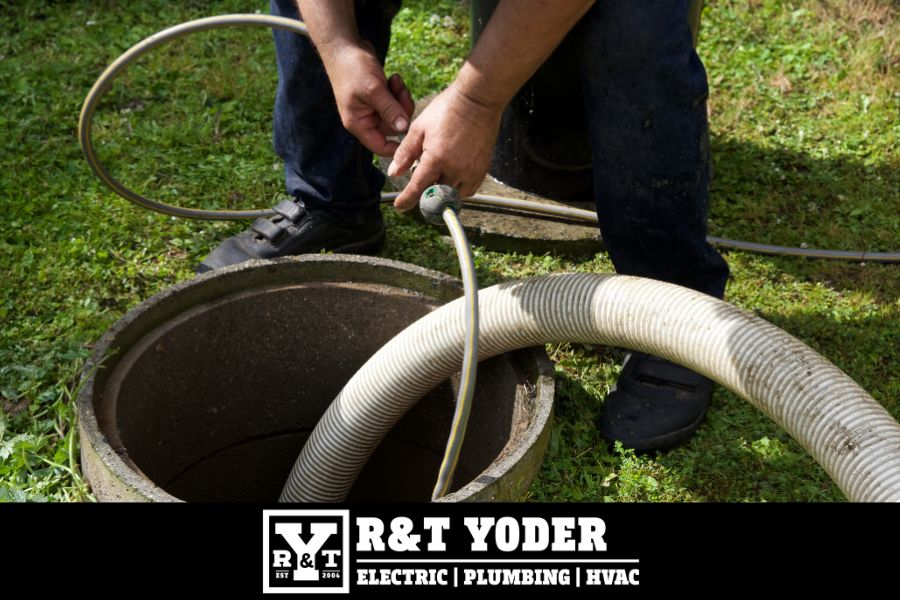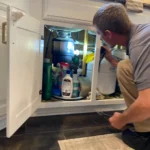Clogged drains can bring household activities to a grinding halt. Whether it’s a slow sink, a blocked shower, or a backed-up sewer line, effective drain cleaning is essential to restoring normal function. One of the most powerful and efficient methods for clearing stubborn clogs and debris is hydrojet drain cleaning. But what is hydrojet drain cleaning, and how does it work compared to traditional methods?
1. What Is Hydrojet Drain Cleaning?
Hydrojet drain cleaning (often referred to simply as hydrojetting) is a method of cleaning drains and sewer lines using high-pressure water. This technique involves the use of a specialized machine that pumps water at pressures ranging from 3,000 to 8,000 PSI (pounds per square inch). The water is forced through a flexible hose fitted with a specialized nozzle, which blasts away blockages, grease, mineral buildup, and even tree roots from the inside of pipes.
Unlike traditional methods like snaking, which only breaks through blockages, hydrojetting cleans the entire pipe thoroughly. It’s a preferred method for both residential and commercial plumbing systems due to its effectiveness and efficiency.
2. How Does Hydrojet Drain Cleaning Work?
The hydrojetting process is straightforward but requires specialized equipment and professional expertise to execute safely. Here’s a step-by-step breakdown of how it works
Step 1: Initial Inspection
- Camera Inspection: Before hydrojetting, a plumber typically performs a video inspection of the pipes using a small, waterproof camera. This helps determine the location and severity of the blockage and ensures that the pipes are in good condition to withstand high-pressure cleaning.
Step 2: Setup
- Equipment Preparation: The hydrojetting machine is set up outside the home or building. A high-pressure hose is connected to the machine and fed into the drain or sewer cleanout.
- Selecting the Nozzle: Different nozzles are used depending on the type of blockage. For example, rotating nozzles are ideal for grease, while penetrating nozzles can tackle stubborn obstructions.
Step 3: High-Pressure Water Injection
- Water Blast: The machine pumps water through the hose and out of the nozzle at high pressure. The force of the water scours the inside of the pipes, breaking up and flushing away debris, grease, sludge, and even tree roots.
- 360-Degree Cleaning: The nozzle design allows water jets to shoot in multiple directions, ensuring the entire pipe diameter is cleaned, not just the area of the blockage.
Step 4: Flushing the Debris
- Clearing the System: As the high-pressure water dislodges blockages, the debris is flushed out of the pipe and into the main sewer system.
- Post-Cleaning Inspection: In many cases, another camera inspection is performed to ensure the pipes are completely clear.
3. When Should Hydrojetting Be Used?
Hydrojetting is a versatile solution for a wide range of drain and sewer issues. Here are some scenarios where hydrojet drain cleaning is particularly effective
3.1 Persistent Clogs
If you’ve tried snaking or chemical cleaners without success, hydrojetting can remove deep or stubborn blockages that other methods can’t handle.
3.2 Grease Buildup
Kitchen sinks and commercial kitchens often suffer from grease buildup. Hydrojetting effectively breaks down and flushes out thick layers of grease that can cause recurring clogs.
3.3 Tree Roots in Sewer Lines
Tree roots can infiltrate sewer lines and create significant blockages. The high-pressure water of hydrojetting can cut through roots and clear the line without damaging the pipes.
3.4 Preventative Maintenance
For businesses like restaurants, where grease and food debris can quickly build up, regular hydrojetting can prevent blockages and maintain smooth drainage.
3.5 Sewer Backups
If sewage is backing up into your home, hydrojetting can clear the blockage and restore proper flow.
4. Benefits of Hydrojet Drain Cleaning
Hydrojetting offers several advantages over other drain cleaning methods. Here are the key benefits
4.1 Thorough Cleaning
Unlike snaking, which only punctures blockages, hydrojetting completely cleans the interior walls of the pipes. This ensures longer-lasting results and reduces the likelihood of future clogs.
4.2 Effective on Multiple Types of Blockages
Hydrojetting can handle various blockages, including grease, sludge, mineral deposits, hair, soap scum, and tree roots.
4.3 Environmentally Friendly
Because hydrojetting relies solely on water pressure, it doesn’t use harsh chemicals that can damage pipes or harm the environment.
4.4 Prevents Future Issues
By thoroughly cleaning the pipes, hydrojetting helps prevent new blockages from forming, making it a great option for routine maintenance.
4.5 Safe for Most Pipes
When performed by a professional, hydrojetting is safe for most modern plumbing systems, including PVC, cast iron, and clay pipes.
5. Limitations and Risks of Hydrojetting
While hydrojetting is highly effective, it does have some limitations and potential risks
5.1 Not Suitable for Old or Damaged Pipes
If pipes are old, brittle, or cracked, the high-pressure water can cause further damage. A preliminary camera inspection helps identify these vulnerabilities.
5.2 Requires Professional Expertise
Hydrojetting is not a DIY job. The equipment is powerful, and improper use can damage pipes or lead to injury. Always hire a licensed plumber for hydrojetting services.
5.3 Higher Initial Cost
Hydrojetting typically costs more than traditional snaking or chemical treatments. However, its thoroughness and long-lasting results often make it a cost-effective solution in the long run.
6. How Hydrojetting Compares to Other Drain Cleaning Methods
Let’s compare hydrojetting to other common methods of drain cleaning
6.1 Drain Snaking (Augering)
- How It Works: A flexible metal cable with a corkscrew tip is fed into the drain to break up blockages.
- Pros: Inexpensive, quick, and effective for minor clogs.
- Cons: Only breaks through blockages and doesn’t clean pipe walls.
6.2 Chemical Drain Cleaners
- How It Works: Caustic chemicals dissolve clogs by breaking down organic matter.
- Pros: Readily available and easy to use.
- Cons: Can damage pipes, harmful to the environment, and not effective on all types of clogs.
6.3 Enzymatic Cleaners
- How It Works: Bacteria or enzymes break down organic clogs over time.
- Pros: Environmentally friendly and safe for pipes.
- Cons: Slow-acting and ineffective for severe clogs.
Comparison Summary
- Hydrojetting is the most thorough and effective method for removing all types of blockages and debris. While it may be more expensive, it offers longer-lasting results and prevents future issues.
7. Cost of Hydrojet Drain Cleaning
The cost of hydrojetting varies depending on several factors
- Typical Range: $300 to $600 for residential services.
- Factors Affecting Cost:
- Severity of the Clog: More severe or extensive blockages can increase the cost.
- Pipe Accessibility: Hard-to-reach pipes may require more labor.
- Location: Costs can vary depending on regional rates and local demand.
While hydrojetting may have a higher upfront cost, its effectiveness and thorough cleaning often make it more cost-efficient in the long run compared to repeated snaking or chemical treatments.
Hydrojet drain cleaning is a powerful, efficient, and environmentally friendly method for clearing stubborn clogs and maintaining clean pipes. By understanding what hydrojetting is, how it works, and how it compares to other methods, you can make an informed decision when facing drain issues.
While hydrojetting offers many benefits, it’s essential to rely on professional plumbers to perform the service safely. Whether you’re dealing with a tough blockage, grease buildup, or tree roots, hydrojetting can provide a thorough solution that keeps your plumbing system running smoothly.











